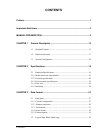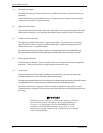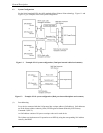
General Description
14 C141-E252
(4) Dual SAS port support
The HDDs have two pairs of driver and receiver set (PHY) for the SAS to support dual SAS port
connection.
On the HDDs, Primary and Secondary Ports on SAS plug connector (2 physical links plus power
connections) are used for SAS port connection.
(5) High-speed data transfer
The maximum data-transfer speed on the SAS is 300.0 MB/s. The large-capacity data buffer of the
HDDs enable the effective use of such high-speed data transfers available on the SAS connection.
(6) Continuous block processing
The addressing method of data blocks is logical block address. The initiator can access data by
specifying block number in a logically continuous data space without concerning the physical
structure of the track or cylinder boundaries.
The continuous processing up to [64K-1] blocks in a command can be achieved, and the HDDs can
perform continuous read/write operation when processing data blocks on several tracks or cylinder.
(7) Multi-segment data buffer
The data buffer is 16M bytes. Data are transferred between SAS port and disk media through this
data buffer. This feature provides the suitable usage environment for users.
(8) Cache feature
After executing the READ command, the HDDs read automatically and store (prefetches) the
subsequent data blocks into the data buffer (Read-ahead caching).
The high speed sequential data access can be achieved by transferring the data from the data buffer without
reaccessing the disk in case the subsequent command requests the prefetched data blocks.
The Write Cache feature is supported. When this feature is enabled, the status report is issued
without waiting for completion of write processing to disk media, thereby enabling high speed write
processing.
When Write Cache is enabled, you should ensure that the cached data is
surely flushed to the disk media before you turn off the HDDs power.
To ensure it, you should issue either the SYNCHRONIZE CACHE
command or the STOP UNIT command with specifying "0" to the
Immediate bit, and then confirm that the command is surely terminated
with the GOOD STATUS.


















